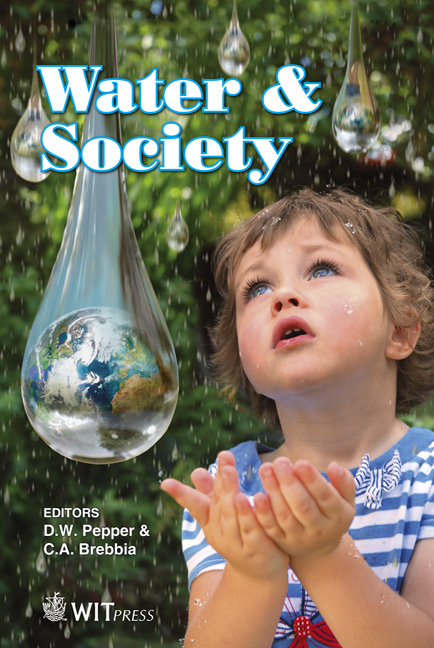Outlook Of Future Discharge At The Dam Watershed Considering Climate Change
Price
Free (open access)
Transaction
Volume
153
Pages
10
Page Range
95 - 104
Published
2011
Size
4,838 kb
Paper DOI
10.2495/WS110091
Copyright
WIT Press
Author(s)
D. K. Koh & J.-H. Park
Abstract
Rapid climate change has made the job of water managers harder and has increased the imperative for considering climate change impacts on rainfall and runoff predictions. The purpose of this study is to predict future runoffs at the Yongdam and Daechung dams under meteorological regimes adjusted for the impacts of climate change. For this study, weather series data including temperature and precipitation forecasts up to the year 2090 were used. These forecasts are compiled and disseminated officially by the Korea Meteorology Agency (KMA). The forecasts are generated using mesocale (MM5) Regional Circulation Model (RCM) (27 km resolution) and Intergovernmental Panel on Climate Change’s (IPCC) A1B emissions scenario, employing the results of coupled climate model ECHO-G (400 km resolution) as boundary conditions. SWAT (Soil and Water Assessment Tool) was used for rainfall-runoff modeling for the period 2011 to 2010. The GIS based SWAT model can simulate temporal and spatial distributions of surface and subsurface flows. The weather series was fed into the SWAT model to simulate the streamflows associated with other hydrologic components such as subsurface flow, soil moisture contents etc. This approach is applied to the Yongdam Dam and Daechung Dam in the Geum River Basin, Korea. The results show that annual mean inflow to the dam reservoirs will be decreased by 7.6% compared to the latest 10 year observation. Regarding the seasonal variation, dam reservoir inflows during winter and autumn are going to increase, while in summer less inflow is predicted. It is necessary to conceive a strategy for dam development and management, which is cognizant of the impacts of climate change. Keywords: climate change, discharge, RCM, SWAT, A1B scenario.
Keywords
climate change, discharge, RCM, SWAT, A1B scenario





